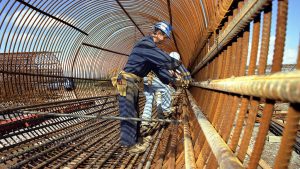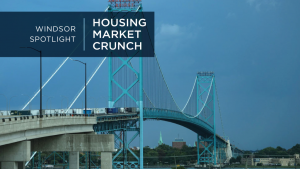Ontario Finance Minister Charles Sousa released his Liberal government’s 2018 budget March 28, delivering a spending plan that sent the province’s finances back into deficit, was heavy on new social programs and introduced new hospital, transit and other infrastructure spending.
The hallmark of the $158-billion budget was social spending, with new programs announced for child care, dental care, drug support, seniors and health care with an election just over two months on the horizon. The health care envelope includes an expansion of capacity as Sousa announced a plan to spend $19 billion on hospital infrastructure over the next 10 years that included construction at the Hospital for Sick Children, the Centre for Addiction and Mental Health, Ottawa Hospital, Scarborough and Rouge Hospital, North York General Hospital, Lakeridge Health and South Bruce Grey Health Centre. The Hospital for Sick Children’s spend was costed at $2.4 billion.
Sousa denied the return to deficit spending reflected pre-election imperatives.
The budget does shows a spike in spending of almost 12 per cent, with a revenue shortfall of $6.7 billion in the next fiscal year and more deficits forecast up to 2024.
“This is not election-cycle decisions that we’re making, these are long-term in scope,” he told reporters at Queen’s Park.
New Progressive Conservative Leader Doug Ford responded, “The Liberals think they can buy your vote, your vote is for sale.”
The budget included an extension of the long-term infrastructure spending plan, with the government now pledging to spend $230 billion over 14 years up to 2028 for “priority projects such as hospitals, schools, transit, bridges and roads.”
The spending is expected to support about 140,000 jobs, on average, per year, it stated.
The new targets for that period are $79 billion on public transit, $25 billion on highways and $16 billion to build new schools and renovate them in addition to the $19 billion in capital grants to hospitals. In 2018, the province has pledged an additional $784 million in new builds, additions and upgrades to 79 schools.
The budget scaled up projected spending from the government’s $6.5-billion Trillium Trust fund that targets primarily transit and transportation infrastructure. The government will allocate $800 million from the fund in 2018–19, up from $500 million from 2016–17 to 2017–18.
For the first time, the Wynne government targeted money for construction of high-speed rail. A total of $11 billion was pledged for the proposed Toronto to Windsor line, with phase one service to begin from Toronto to London.
Among other new programs, the government announced a Good Jobs and Growth Plan with $935 million in new investments over the next three years to help businesses deal with technological change and uncertainty over trade negotiations; and the Ontario Apprenticeship Strategy, with $170 million to be spent over three years to expand the Ontario Youth Apprenticeship Program among other targets. The government will also launch a new Office of Apprenticeship Opportunity.
The government has also announced new support for Habitat for Humanity, with funding of $5.8 million over three years to establish a Build Factory in Burlington that would enable up to 120 Habitat for Humanity construction sites across the province.
The Daily Commercial News will have industry reaction to the budget in an upcoming article.











Recent Comments
comments for this post are closed